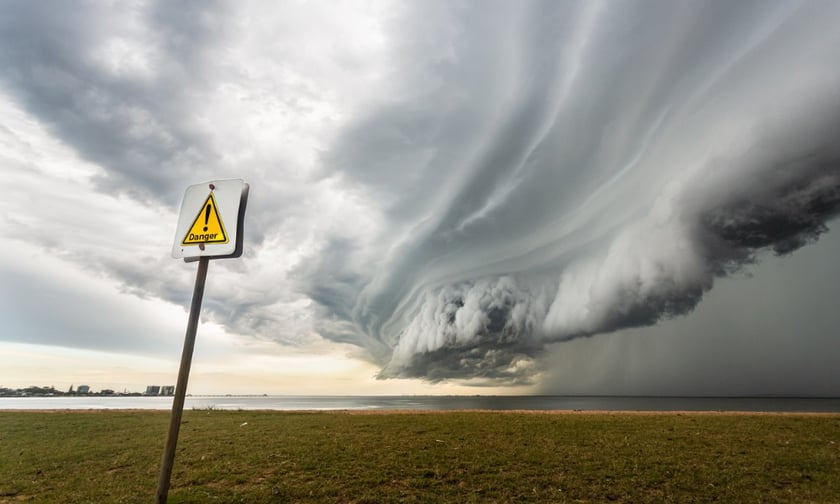

Making landfall on July 8, 2024, near Matagorda, Texas, Hurricane Beryl has wreaked havoc across parts of the Caribbean, the Yucatán Peninsula, and the Gulf Coast of the US – setting multiple records along the way, including as the earliest Category 5 hurricane yet recorded.
The storm, which has been blamed for eight deaths in the US to date, has prompted significant industry discussion regarding the categorization of storms, record-breaking claims and its potentially significant impact on catastrophe reserves. Meanwhile, the latest estimates from Moody’s RMS Event Response indicate the US insured losses from the catastrophe event are likely to register between US$2.5 billion and US$4.5 billion.
The modeling giant’s total insured loss estimates for Hurricane Beryl, including post-event loss amplification and non-modeled sources of loss, are set to be significant, with a best estimate for the private market insured losses standing at US$3.7 billion. Including, wind, storm surge and precipitation-induced flooding, Moody’s RMS estimates losses to the National Flood Insurance Program (NFIP) from this event to be under $300 million.
At a recent media dialogue at the launch of Swiss Re’s 2024 ‘World Insurance Sigma Report‘, Kera McDonald, chief underwriting officer at Swiss Re Corporate Solutions, noted that it’s too early for the re/insurance giant to start to comment on the impact of Hurricane Beryl. What the event does underscore, however, she said, is that rather than the frequency of large storms, the volatility of industry losses is being driven by where these storms land.
During the briefing, McDonald touched on the ongoing expansion of the Insurance-Linked Securities (ILS) market which had its largest year ever last year and is, “an element of our industry that is here to stay and growing”.
Looking to the response of ILS managers during a major incident such as Hurricane Beryl, Mitchell Rosenberg, managing director at Howden Capital Markets & Advisory noted that as hurricane season advances, ILS managers are reviewing updated forecasts and the composition of their portfolio. It is also during this time that ILS managers are actively engaging with their investors to discuss potential implications to their capital – whether positive or negative.
Touching on what he considers the major implications of this hurricane for cat bonds and the wider ILS market, Rosenberg said: “Though the overall impact from the storm is evolving to an extent, it seems the direct impact to the ILS market from Hurricane Beryl is relatively small.” As a result, meaningful market implications are not anticipated to result from the event.
Sharing his insights into how Hurricane Beryl has highlighted the importance of catastrophe bonds in mitigating the economic impacts of nat-cat activities, he highlighted that neither the Jamaica nor Mexico government sponsored catastrophe bonds were triggered. “This reinforced how the ILS market can help finance recovery efforts following a natural catastrophe,” he said, “which can drive more investment into the region and lead to stronger resiliency over the long term.”
As to whether he is seeing an increase in other investors looking to exploit the market’s current volatility, Rosenberg said that, given the state of the market over the last 12-24 months, the investor profiles of those focused on the ILS market have grown and broadened. “With that, there are investors with different strategies and return hurdles, which includes those who are more opportunistic in nature,” he said.
The increased frequency and severity of nat-cat events has been under the microscope in recent years, with McDonald noting that, in 2017, when Hurricanes Harvey, Irma and Maria pushed insured losses above the US$100 billion mark, nobody necessarily expected that to become the norm. In six of the seven years since, she said, this figure has sat at or above that $100 billion mark, representing a step change from the years before.
“We anticipate a continued growth in these natural catastrophe events in the range of 5-7% per year,” she said. “To put that in context, relative to GDP, the natural catastrophe losses in the world have doubled in the last 30 years. But at a 5-7% growth rate, they’re going to double again in the next 10, relative to GDP.”
It’s an unfortunate reality that $100 billion in insured losses is the “new normal,” said Swiss Re’s chief global economist Jerome Haegeli – and it’s a state of affairs thrown into sharper relief by the realization that the industry hit that watermark last year, without a peak hurricane loss.
“It is too early to comment on [Hurricane Beryl], we are monitoring it very closely,” he said. “But clearly, if you look at last year’s losses of US$100 billion, if you were to have had a peak hurricane risk, there would have been much more significant losses out there. But again, it’s not the frequency, but where the hurricane is landing, because of the accumulation of wealth. That is what really triggers the severity in terms of economic and insured losses.”
